Morocco, a captivating blend of African and Arab worlds, offers an array of top-rated tourist attractions that promise a diverse and enriching travel experience. From the bustling and vibrant Marrakesh Medina to the enchanting blue-hued city of Chefchaouen, Morocco’s attractions are as varied as they are captivating. The country’s landscape encompasses dramatic scenery, from the craggy heights of the Atlas Mountains to the towering sand dunes of the Sahara, making it an adventure seeker’s paradise. Additionally, Morocco’s timeless, tranquil world of cute coastal villages, colorful-painted towns, and remote mountain outposts defended by fortress walls beckon visitors to explore its unique cultural heritage and age-old customs.
The old cities of Marrakesh and Fes, with their maze-like alleyways and vibrant souks, provide an immersive experience into the local life and traditional artisan crafts, while Rabat’s Oudaias Kasbah neighborhood offers a picturesque and peaceful district that feels lost in time. Furthermore, the country’s stunning beaches and modern yet cultured cities, such as Casablanca, add another layer of allure to Morocco’s top-rated tourist attractions. With its diverse offerings, Morocco continues to enchant all who visit, making it a must-visit destination for travelers seeking an unforgettable and enriching experience.
1. Marrakesh Medina
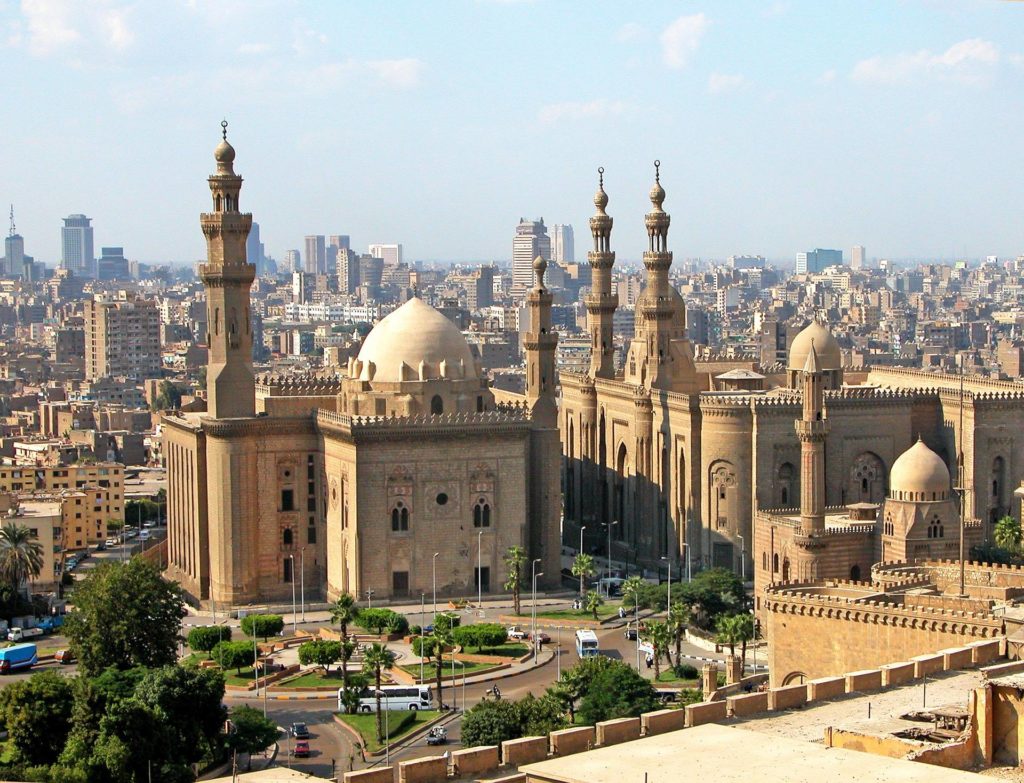
Nestled within the bustling city of Marrakesh, Morocco, lies the enchanting Marrakesh Medina, a historical district bursting with vibrant colors, captivating scents, and rich cultural heritage. This UNESCO World Heritage site is a labyrinthine network of narrow alleyways, bustling souks, and architectural wonders that have stood the test of time. As you wander through the Medina’s maze-like streets, you’ll encounter a treasure trove of traditional Moroccan craftsmanship, from intricately woven textiles to handcrafted metalwork, all while being serenaded by the melodic tunes of local musicians and the calls to prayer echoing from ancient minarets.
Marrakesh Medina is a sensory feast, where the aromas of exotic spices, sizzling street food, and fragrant blooms mingle in the air, creating an intoxicating atmosphere that transports visitors to another world. The heart of the Medina is the iconic Jemaa el-Fnaa square, a bustling hub of activity where snake charmers, storytellers, and street performers captivate audiences against the backdrop of the Koutoubia Mosque’s towering minaret. As the sun sets, the square transforms into a lively open-air food market, offering a tantalizing array of Moroccan delicacies that tempt the taste buds and provide a true taste of local flavors. Whether you’re haggling for treasures in the souks, sipping mint tea in a traditional riad, or simply soaking in the vibrant ambiance, Marrakesh Medina promises an unforgettable sensory adventure.
2. Chefchaouen
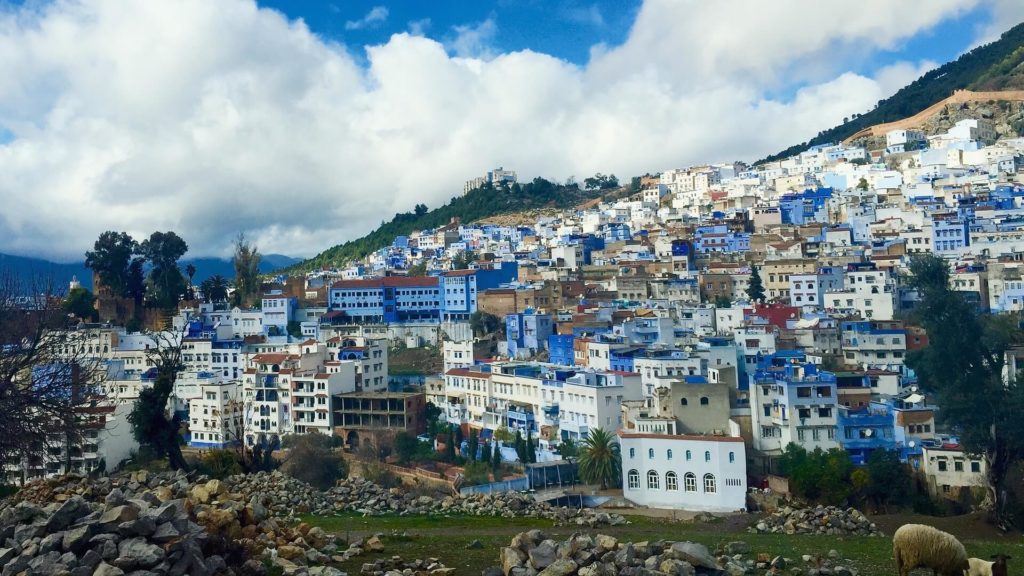
Nestled within the rugged Rif Mountains of northwest Morocco, Chefchaouen, with its distinctive blue-washed buildings, exudes an otherworldly charm that captivates visitors from around the globe. This picturesque town, often referred to as the “Blue Pearl,” offers a tranquil escape from the hustle and bustle of urban life, where narrow winding streets lead to hidden squares adorned with vibrant potted plants and local artisans’ wares. The mesmerizing blue walls and doorways, believed to symbolize the sky and heaven, create a serene atmosphere that is perfect for leisurely strolls and moments of quiet contemplation. Chefchaouen’s timeless beauty, coupled with its welcoming locals and breathtaking mountain vistas, makes it a truly enchanting destination for those seeking a unique and immersive travel experience.
3. Erg Chebbi’s Dunes
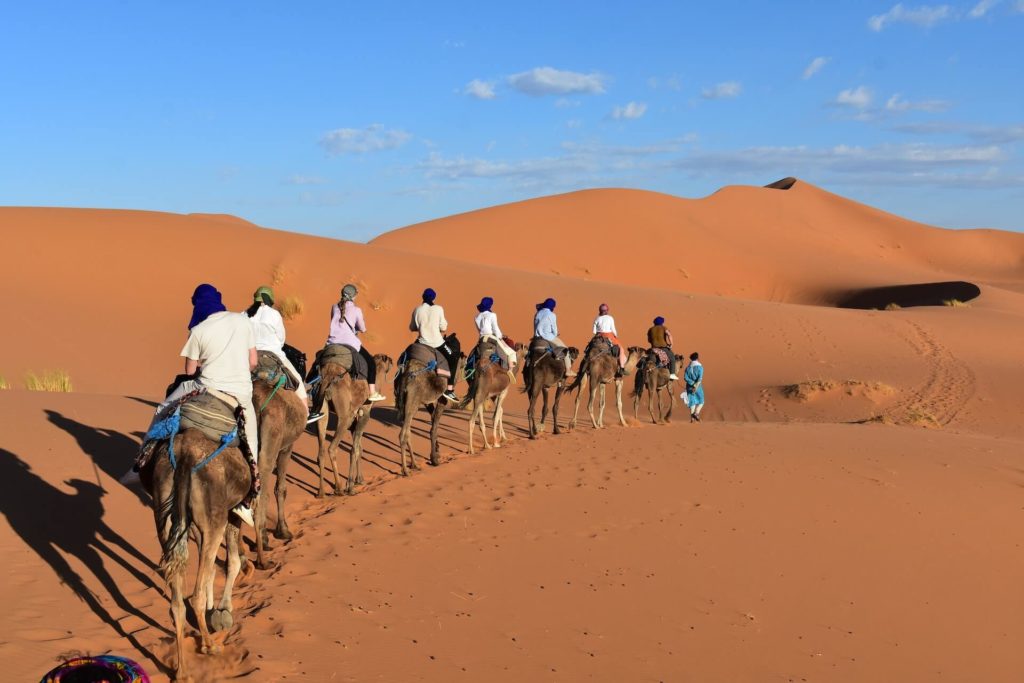
Erg Chebbi’s dunes, located in the southeastern part of Morocco, near the town of Merzouga, stand as a testament to the awe-inspiring grandeur of the Sahara Desert. These imposing sand dunes, some towering as high as 150 meters, create a mesmerizing landscape that beckons adventurers and nature enthusiasts alike. As the dunes shift in color from golden hues to fiery reds with the changing light of the sun, they offer an ever-changing spectacle that leaves visitors spellbound. Erg Chebbi’s dunes also provide the perfect setting for experiencing the magic of a desert sunrise or sunset, as the sky transforms into a canvas of vibrant colors, casting an ethereal glow over the undulating sea of sand.
Beyond their visual splendor, Erg Chebbi’s dunes offer a playground for thrill-seekers, inviting them to partake in exhilarating activities such as sandboarding and camel treks across the endless expanse of dunes. Additionally, the nearby luxury desert camps allow visitors to immerse themselves in the timeless allure of the Sahara, spending nights under the star-studded sky and experiencing the traditional music, cuisine, and hospitality of the Berber people. Erg Chebbi’s dunes stand as a natural wonder that embodies the mystical allure of the desert, offering an unforgettable and transformative experience for all who venture into its breathtaking embrace.
4. Fes el Bali

Fes el Bali, often referred to as the “Old Fes,” stands as a living testament to Morocco’s rich history and cultural heritage. This UNESCO-listed medina is a labyrinthine tapestry of narrow alleys, ancient mosques, bustling souks, and ornate riads, allowing visitors to step back in time and immerse themselves in the vibrancy of traditional Moroccan life. As one of the world’s largest car-free urban areas, Fes el Bali exudes an authentic old-world charm, where the echoes of artisans at work, the heady scent of exotic spices, and the kaleidoscope of colors from handcrafted goods create an enchanting and immersive sensory experience.
The medina’s architectural marvels, including the renowned Al-Qarawiyyin Mosque and University, stand as enduring symbols of Islamic architecture and learning, adding a layer of historical and intellectual significance to this ancient city. The intricate mosaics, elaborately carved woodwork, and soaring minarets showcase the exquisite craftsmanship and spiritual devotion that define Fes el Bali, making it a captivating destination for cultural exploration and historical discovery.
5. Ait Ben Haddou

Ait Ben Haddou, a UNESCO World Heritage site, is a stunning example of a traditional Moroccan ksar, or fortified village, that has stood the test of time amidst the dramatic landscape of the High Atlas Mountains. This ancient mud-brick settlement, with its earthen buildings rising from the desert floor, exemplifies the architectural ingenuity of Berber civilization and has served as a backdrop for numerous films and television shows, adding to its allure. The labyrinthine alleys and towering kasbahs of Ait Ben Haddou beckon visitors to explore its well-preserved streets, providing a glimpse into the historical and cultural richness of Morocco’s past.
The village’s strategic location along the former caravan route between the Sahara and Marrakech further adds to its historical significance, as it was once a bustling hub of trade and commerce. Today, Ait Ben Haddou continues to captivate travelers with its timeless beauty and offers a window into the traditional way of life in Morocco, making it a must-visit destination for those seeking a tangible connection to the country’s rich heritage and architectural splendor.
6. Essaouira
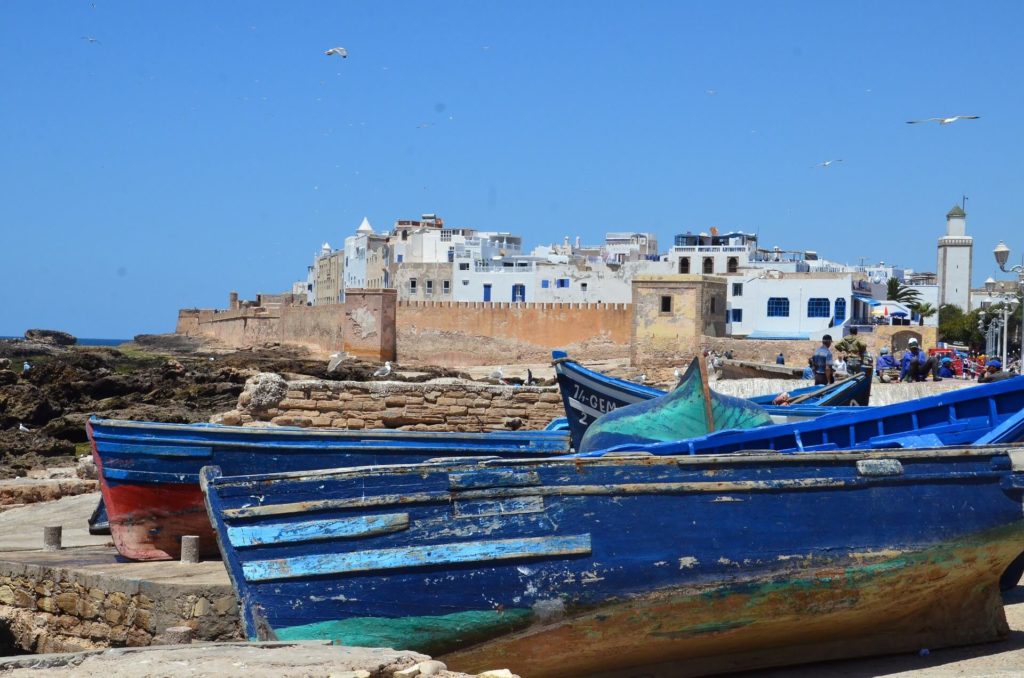
Essaouira, a coastal gem on Morocco’s Atlantic shore, exudes a laid-back charm that sets it apart from the country’s bustling cities. This picturesque seaside town is renowned for its whitewashed buildings, azure shutters, and a windswept harbor where colorful fishing boats bob in the gentle sea breeze. The medina’s narrow lanes are a treasure trove of artisan workshops, where skilled craftsmen produce intricate woodwork, vibrant textiles, and unique jewelry, adding to the town’s bohemian and artistic ambiance.
Beyond its captivating coastal beauty, Essaouira is a paradise for water sports enthusiasts, offering prime conditions for windsurfing and kitesurfing along its sun-drenched beaches. The town’s relaxed atmosphere, coupled with its rich history and artistic vibrancy, make it a haven for travelers seeking a blend of cultural immersion, seaside relaxation, and outdoor adventure. Whether strolling along the ancient ramparts, savoring freshly caught seafood at local eateries, or simply absorbing the town’s creative energy, Essaouira promises an unforgettable and multifaceted Moroccan experience.
7. Volubilis
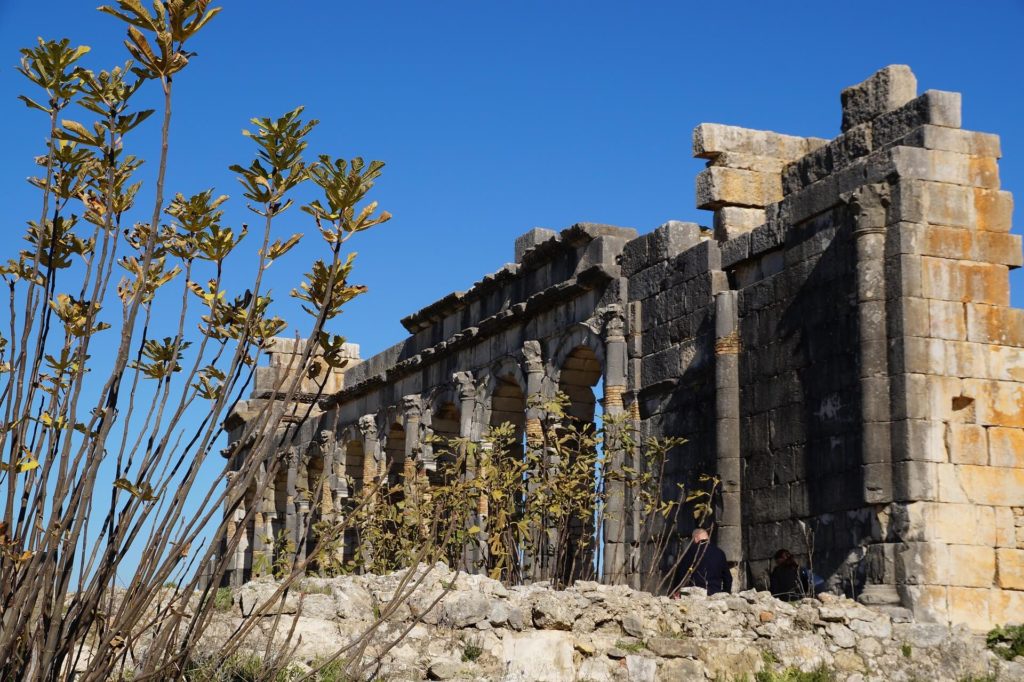
Volubilis, a UNESCO World Heritage site, stands as a testament to the Roman Empire’s enduring influence in North Africa. This ancient archaeological marvel, located near the city of Meknes, showcases remarkably well-preserved ruins that offer a glimpse into the grandeur of a bygone era. Visitors can wander through the remnants of grand villas, intricate mosaics, and imposing arches, gaining a profound appreciation for the architectural and cultural legacy left by the Romans in this region.
The site’s strategic position along ancient trade routes contributed to its prosperity and cultural diversity, as evidenced by the fusion of Roman, Berber, and later Islamic influences in the site’s structures and artifacts. The picturesque setting, with the rolling hills of the surrounding countryside as a backdrop, adds to the allure of Volubilis, making it a must-visit destination for history enthusiasts and travelers seeking to unravel the layers of Morocco’s rich and diverse heritage.
8. Dades Valley

The Dades Valley, situated at the foothills of the High Atlas Mountains in Morocco, is a breathtaking expanse of rugged terrain, verdant oases, and dramatic rock formations. This picturesque valley, often referred to as the “Valley of a Thousand Kasbahs,” is renowned for its stunning scenery, with the Dades River carving a path through the rocky landscape, creating a striking contrast between the lush greenery of the palm groves and the arid, towering cliffs.
Travelers are drawn to the Dades Valley for its captivating hiking trails, offering the opportunity to explore the ancient mud-brick kasbahs, traditional Berber villages, and panoramic vistas that unfold around every bend. As the sun sets, casting a warm glow over the valley, visitors can revel in the tranquility and natural beauty of this timeless landscape, making the Dades Valley a truly enchanting destination for those seeking an authentic and immersive Moroccan experience amidst awe-inspiring natural surroundings.
9. Erg Chigiga

Located in the remote south of Morocco near the Algerian border, Erg Chigaga offers an unparalleled landscape perfect for photographers and adventurers. This expansive stretch of golden sand dunes, extending for 40km and flanked by mountain ridges, provides a serene and enveloping desert experience. Visitors can embark on a scenic and diverse 8.5-hour drive from Marrakech to Erg Chigaga, passing through lush valleys, breathtaking gorges, and eventually reaching the gateway to the Sahara. As the largest sand sea in Morocco, Erg Chigaga’s vast expanse of golden crescents, reaching heights of 300m, promises an awe-inspiring backdrop for landscape photography and a tranquil setting for cultural immersion and thrilling adventures.
Upon arrival at Erg Chigaga, visitors can unwind in Berber camps such as the luxurious Camp Al Koutban, which offers large tents, beautiful outside areas, proper facilities, and delectable cuisine. The camp provides an ideal base for photography enthusiasts, with numerous viewpoints within the dunes accessible within minutes, as well as the opportunity for a 30 to 45-minute hike to the top of the largest dune. The evenings offer the chance to witness the desert spectacle as the sun sets, casting a warm glow over the dunes and providing mesmerizing photographic opportunities. Whether it’s a guided photo tour or a leisurely exploration, Erg Chigaga promises a once-in-a-lifetime experience amidst Morocco’s enchanted Sahara Desert.
10. Bab al-Mansour in Meknes
Bab al-Mansour, located in the imperial city of Meknes, stands as a testament to the grandeur and architectural prowess of Morocco’s historical heritage. This monumental gate, adorned with exquisite tile work, intricate geometric patterns, and ornate calligraphy, serves as a striking entry point to the imperial city. The monumental scale and intricate details of Bab al-Mansour reflect the opulence and power of the Alaouite Sultan Moulay Ismail, who commissioned its construction in the 18th century, leaving a lasting mark on Morocco’s rich architectural legacy.
Visitors to Bab al-Mansour are captivated by the gate’s imposing presence and the meticulous craftsmanship evident in every detail. The gate’s grand archway and decorative elements, including zellij tile work and carved marble, offer a captivating glimpse into the artistic and cultural sophistication of Meknes during the height of its imperial glory. As one of the most renowned landmarks in Meknes, Bab al-Mansour continues to attract admirers of Moroccan history and architecture, offering a window into the city’s grand past and the enduring legacy of its royal patrons.
11. Rif Mountains
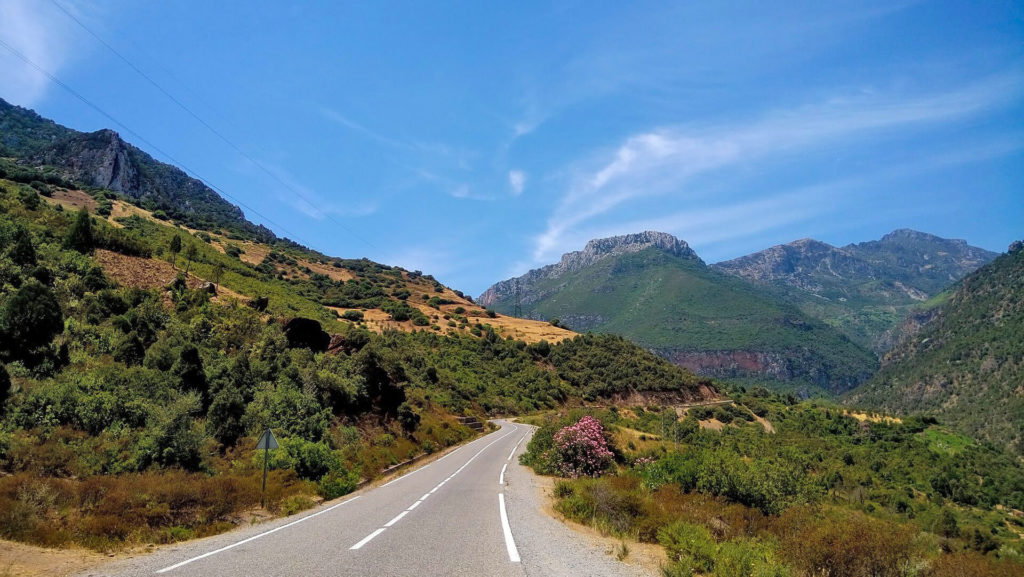
The Rif Mountains, located in the northern part of Morocco, are renowned for their breathtaking natural beauty and unique cultural heritage. This rugged mountain range is characterized by its verdant valleys, picturesque villages, and terraced hillsides, offering a serene escape for nature enthusiasts and hikers. The region’s distinctive Berber culture adds to its allure, providing visitors with the opportunity to immerse themselves in the traditional lifestyle of the local communities and discover the rich tapestry of customs and traditions that have thrived in the Rif Mountains for centuries.
The Rif Mountains also hold historical significance, having been a focal point of resistance and rebellion throughout Morocco’s history. Today, the region welcomes travelers seeking a blend of adventure, cultural exploration, and scenic tranquility. From exploring the charming town of Chefchaouen, known for its striking blue-washed buildings, to embarking on invigorating treks through the mountainous terrain, the Rif Mountains offer a captivating mosaic of natural wonders and cultural experiences that leave a lasting impression on all who visit.
12. Draa Valley
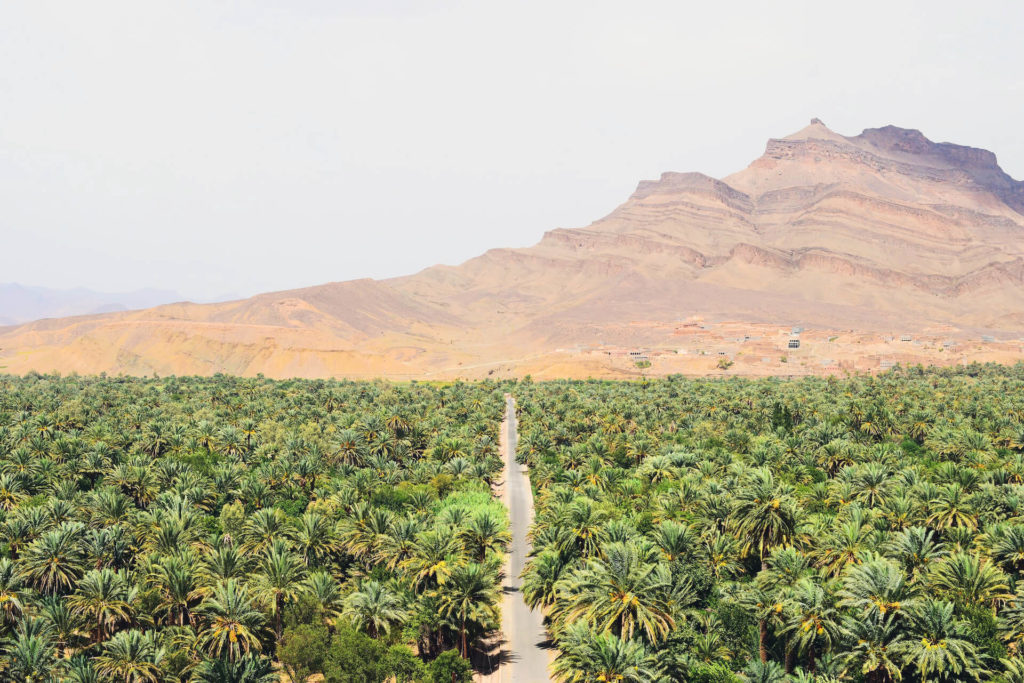
The Draa Valley, extending from the city of Ouarzazate into the Sahara Desert, is a captivating oasis renowned for its natural beauty, rich history, and cultural significance. This stunning region features lush green plains, palm groves, sumptuous kasbahs, and streaming sand dunes, creating a picturesque landscape that reflects the geographical diversity of Morocco. The Draa River, which once extended hundreds of kilometers westward until it joined the Atlantic, has dried up in most parts but still meanders through this fascinating terrain, offering a compelling insight into the region’s ancient history and geological richness.
The Draa Valley is not only a feast for the eyes but also a treasure trove of historical and cultural significance. It boasts ancient cave paintings and carvings, and it was in this valley that the statuette of the Venus of Tan-Tan, one of the oldest prehistoric sculptures ever discovered, was found. Furthermore, the valley played a pivotal role as a significant trading center on the trans-Saharan caravan routes, attracting Jewish, Arab, Berber, and Christian civilizations. The valley is also renowned for its kasbahs, which served as fortresses and the residence of tribe leaders, reflecting the historical battles and cultural influences that have shaped this region over centuries.
In recent years, the Draa Valley has emerged as one one of the top tourist attractions in Morocco, offering a range of activities such as guided tours encompassing mountain hiking, camel riding, and excursions to the breathtaking Chgaga or Tinfou dunes. The region is also home to well-equipped and comfortable hotels, allowing visitors to immerse themselves in the serenity of the starlit sky and experience the enchanting beauty of the Sahara Desert. The Draa Valley’s unique blend of natural splendor, historical significance, and cultural authenticity makes it an exceptional destination for travelers seeking an immersive Moroccan experience.
13. Casablanca’s Hassan II Mosque
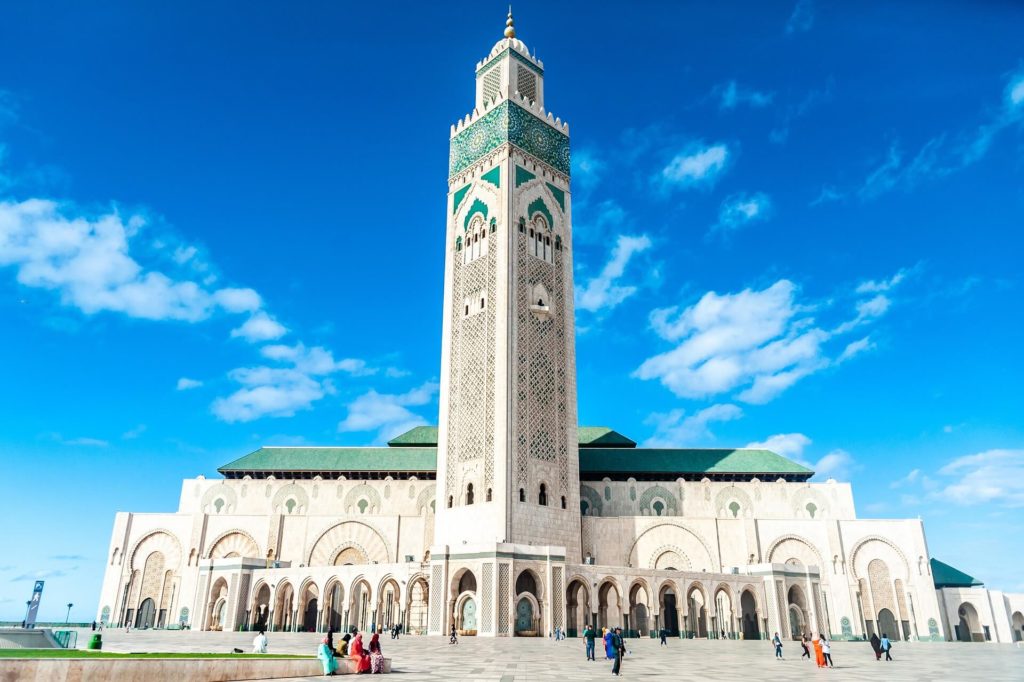
The Hassan II Mosque in Casablanca is a remarkable architectural and religious marvel, known for its intricate craftsmanship, breathtaking design, and significant cultural significance. Completed in 1993, the mosque stands as a testament to Morocco’s rich architectural heritage, blending traditional Islamic design elements with modern engineering techniques. Its minaret, soaring at 210 meters, is the tallest in the world and serves as a beacon of Moroccan identity and religious tolerance.
This grand mosque, with its capacity to accommodate up to 105,000 worshippers, is a hub of spiritual and cultural activities, welcoming visitors from all walks of life to marvel at its stunning interiors adorned with exquisite mosaics, woodwork, and marble, as well as the expansive courtyard overlooking the Atlantic Ocean. The mosque’s expansive esplanade allows for stunning views of the ocean and provides a serene space for contemplation and relaxation. A visit to the Hassan II Mosque offers a profound insight into Morocco’s Islamic heritage and serves as a testament to the country’s commitment to preserving its cultural legacy.
14. Rabat’s Oudaias Kasbah
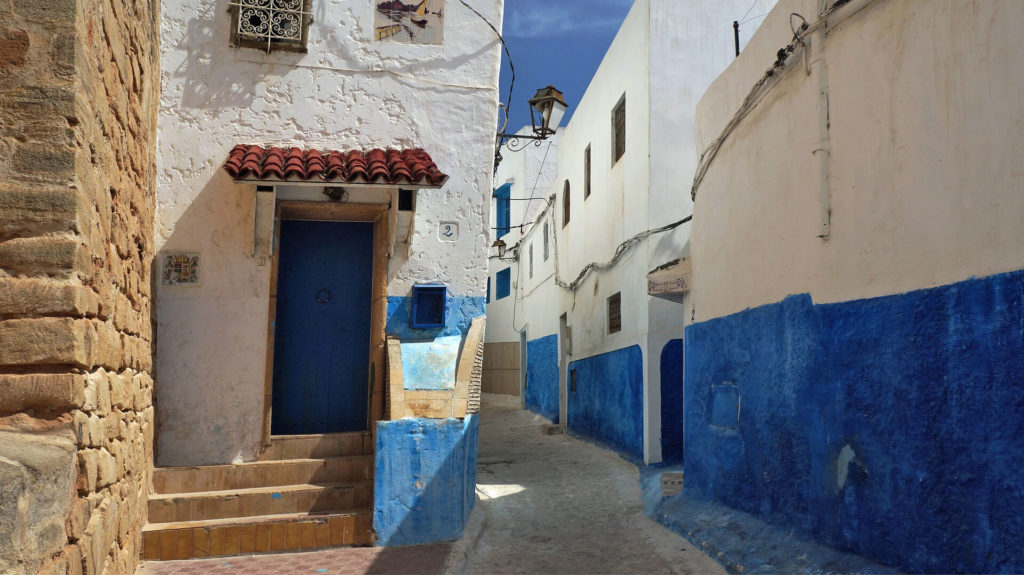
The Oudaias Kasbah in Rabat is a historic fortress and residential area that offers visitors a captivating glimpse into Morocco’s rich architectural and cultural heritage. This ancient citadel, perched on a cliff overlooking the Atlantic Ocean, showcases a harmonious blend of Andalusian and Moroccan architectural styles, featuring narrow winding streets, whitewashed houses, and ornate blue accents that evoke a sense of timeless beauty and tranquility. The Kasbah’s iconic blue and white color scheme, reminiscent of the famed town of Chefchaouen, creates a serene and picturesque ambiance that enthralls visitors.
Within the Oudaias Kasbah, travelers can explore notable attractions such as the Andalusian Gardens, which provide a verdant retreat with lush foliage, vibrant flowers, and panoramic views of the ocean. Additionally, the Kasbah is home to the 12th-century Almohad fortress, known as the Kasbah of the Udayas, which stands as a testament to the area’s rich history and strategic significance. As visitors meander through the labyrinthine streets of the Oudaias Kasbah, they encounter charming cafes, artisanal shops, and timeless landmarks, offering a captivating journey through Rabat’s cultural tapestry and a tranquil escape from the bustling city life.
15. Tangier
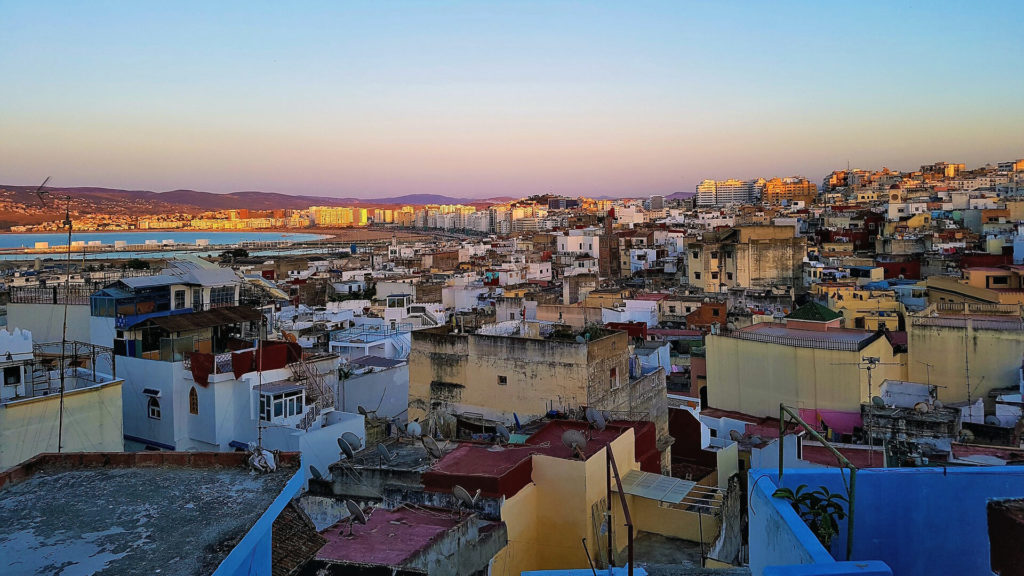
Tangier, a port city on the Strait of Gibraltar, has long been a melting pot of cultures and a vibrant crossroads between Europe and Africa. With its rich history, picturesque coastline, and distinctive blend of influences, Tangier offers a captivating tapestry of experiences for travelers.
The city’s medina, or old town, is a labyrinth of narrow streets, bustling souks, and historic landmarks, providing visitors with a glimpse into Tangier’s ancient past. The medina is also home to the Kasbah, a fortified area with stunning views of the city and the sea, as well as the Dar el Makhzen, a former sultan’s palace that now houses the Museum of Moroccan Arts. Tangier’s cosmopolitan flair is evident in its vibrant café culture, art galleries, and the legendary Café Hafa, a cliffside establishment that has hosted famous writers and artists. Additionally, the city’s beachfront promenade and the nearby Caves of Hercules offer opportunities for relaxation and exploration. With its unique blend of history, culture, and natural beauty, Tangier continues to charm and fascinate visitors from around the world.










